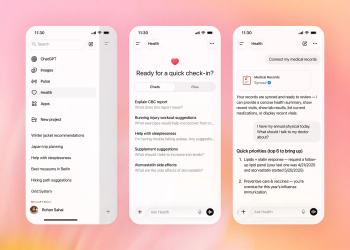
Family members share in the care of COPD patients
Family members and caregivers need to be involved as part of the treatment team for chronic obstructive pulmonary disease (COPD) patients.
Family members and caregivers play an important role as an extension of the physician’s voice in caring for patients with chronic obstructive pulmonary disease (COPD).
“Family members and caregivers provide an extra set of ears and eyes so the patient can carry out tasks in the home environment and ensure that the patient takes his or her medications and takes them in the right way, as well as to recognize signs of exacerbation,” Scott Cerreta, director of education for the COPD Foundation, told Medical Economics.
The family’s role in COPD is to be the voice and advocate for individual patients. “With advanced disease, patients may struggle to make decisions, carry out tasks and follow through with treatment. A family member or caregiver can act on behalf of the patient, when necessary. They should be at all primary care physician visits and a part of conversations with the healthcare team,” said Cerreta.
Details from patient visits often get lost in translation. Cerreta suggests the patient and caregiver prepare a list of questions together to bring to the doctor’s appointment. The caregiver can take notes to help the patient remember what was discussed.
Good questions include those about medications (What is the patient taking and how does the patient take it?) and how to recognize the signs of exacerbation. Several tools for patients and caregivers are available to take to the doctor’s office. “My COPD Action Plan,” developed by the COPD Foundation, is designed for the patient and physician to fill out together. The plan develops red, yellow and green days, depending on the patient’s symptoms, and what action steps to take, says Cerreta.
“For example, on a red day, the action plan may suggest the patient take an antibiotic, which allows him or her to start treatment without having to wait to come to the doctor’s office,” he said.
A dual-sided companion piece is “Recognizing Early Signs of an Exacerbation,” designed for the patient to put on the refrigerator at home. It describes the signs and symptoms that would require the patient to visit the emergency room. “The patient having an exacerbation may be confused. The caregiver can help recognize when the patient is in trouble and know when to call 911,” said Cerreta, who added that most exacerbations derive from infections brought on by not following treatment advice or not taking medications properly.
Creating a home-based care team
Cerreta encourages the patient and family members to know as much as possible about how to manage the disease and to get additional education from the physician’s support staff. “The more the family members know, the better they will be able to communicate with the physician, whose time is limited,” he said.
Inhaler technique- how to use the inhaler and at what time of day-is particularly important –. Videos available through the COPD Foundation’s YouTube channel, for example, are a good way for patients and family members to learn proper inhaler technique. “With any new device, the patient should get training with the family member present. The family member can watch and make sure the patient is using the device properly at home,” he said.
Caregiving can be stressful, and caregivers need to take of themselves, too. “Although physicians don’t pay much attention to caregivers, it’s worth it [for physicians] to have a conversation with caregivers to find out how they are holding up,” said Cerreta.
Joel Africk, JD, president and chief executive officer of the Respiratory Health Association (RHA), a public health non-profit organization in Chicago, agrees that the caregiver is a vital participant in the care of the COPD patient. “The role of family member in COPD depends on the circumstances, including the severity of disease, capabilities of the family member and a variety of logistics,” said Africk.
Because the caregiver plays such an important role, the RHA is developing a tool kit for COPD caregivers to provide them extra support and resources. The tool kit, expected to be available in 2017, will provide information on when to call the physician, based on severity of the COPD.
“Some physicians suggest the caregiver call as soon as the patient has a cold or starts to wheeze. When the patient says, ‘Let’s wait until tomorrow,’ the caregiver needs to have the power to make the decisions to call the physician, 911, or wait,” said Africk.
The tool kit will also help caregivers understand COPD comorbidities, including cardiac, diabetes, depression and sleep apnea, what happens during a hospital visit for exacerbations and how to decide on the next step in care, including a subacute care facility for rehabilitation.
“The more support the caregiver receives to feel comfortable and empowered to make important decisions, the better the COPD patient’s quality of life,” said Africk.
Newsletter
Stay informed and empowered with Medical Economics enewsletter, delivering expert insights, financial strategies, practice management tips and technology trends — tailored for today’s physicians.








